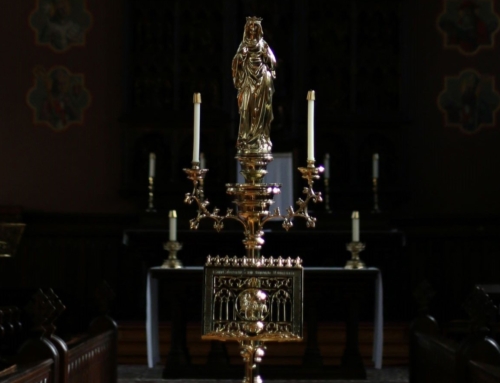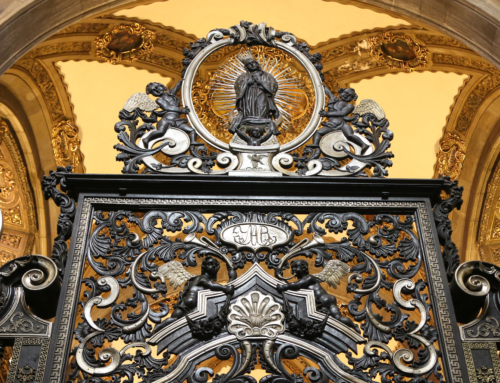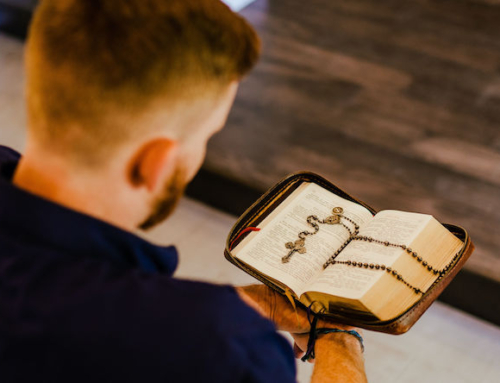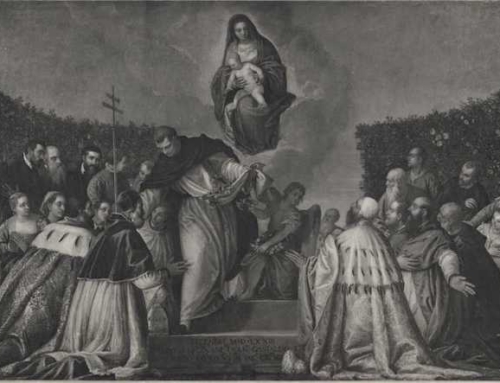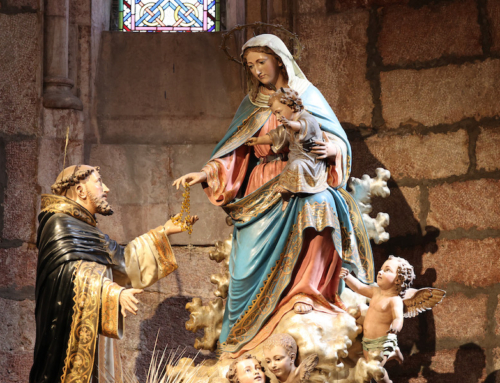As they walked on still conversing, a fiery chariot and fiery horses came between the two of them, and Elijah went up to heaven in a whirlwind, and Elisha saw it happen. He cried out, “My father! my father! Israel’s chariot and steeds!” Then he saw him no longer.
Elijah deserves some extra credit.
Elijah was a prophet, and as a prophet, Elijah pointed toward Christ. Pope Benedict XVI notes that, in addition to the prophet’s words, the “history of a prophet is prophetic too if… it foreshadows the future, the future Christ.” Not only the prophet’s words, but also the very events of his life could point toward Christ. For Church Fathers like Venerable Bede, Elijah’s ascent anticipated Christ’s Ascension. Just as Elijah was taken up from the earth, so too was our Lord.
As an added bonus, this episode from Elijah’s life points toward our Lady, too. In Elijah’s ascent we find hints of the Ascension and the Assumption—the solemnity the Church celebrates today.
Where is Our Lady? St. Catherine of Siena provides the clue. In one of her letters, she describes the Blessed Mother as
the intermediary, the real chariot of fire, who in conceiving within herself the Word, God’s only-begotten Son, brought and gave [to us] the fire of love—for he is love himself (Letters, II, 314).
The real chariot of fire. It’s an arresting image. In the Old Testament, God often manifests Himself through fire (Ex 3:2, 13:21, 19:18), so it is only fitting to recognize Mary as the true chariot of the divine, the Immaculate Virgin who bore the Lord for us. (“Virginity in her was so strong as to be a consuming fire,” remarks St. John Damascene in a homily.) And where our ascended Lord had gone, His fiery chariot—the Virgin herself—would follow:
In the Ascension, Christ was raised in glory to the right hand of the Father, while Mary herself would be raised to that same glory in the Assumption, enjoying beforehand, by a unique privilege, the destiny reserved for all the just at the resurrection of the dead (Pope St. John Paul II, Rosarium Virginis Mariae, #23).
At the Annunciation, Mary is told, “The Lord is with you” (Lk 1:28). Following upon the Assumption, she is with the Lord. Today’s solemnity celebrates this union of Creator and creature inviolate. Because of the unique and total gift of “with-ness” that is Mary’s bodily Assumption into heaven, she can offer a unique help and means for us to get to God. St. Catherine calls her an intermediary, or, we could say, a means of spiritual transportation. In the Litany of Loreto, Mary is described repeatedly as a vessel (“Spiritual Vessel,” “Vessel of Honor,” “Singular Vessel of Devotion”), but this vessel is also a vehicle—a help by which the Christian reaches his ultimate destination. She who contains also transports. She carried the Lord for nine months here below, and now in heaven she labors on behalf of her children, poor sinners that we are, interceding for us, drawing us after her.
✠
Image: Fr. Lawrence Lew, O.P., Stargazer (used with permission)



